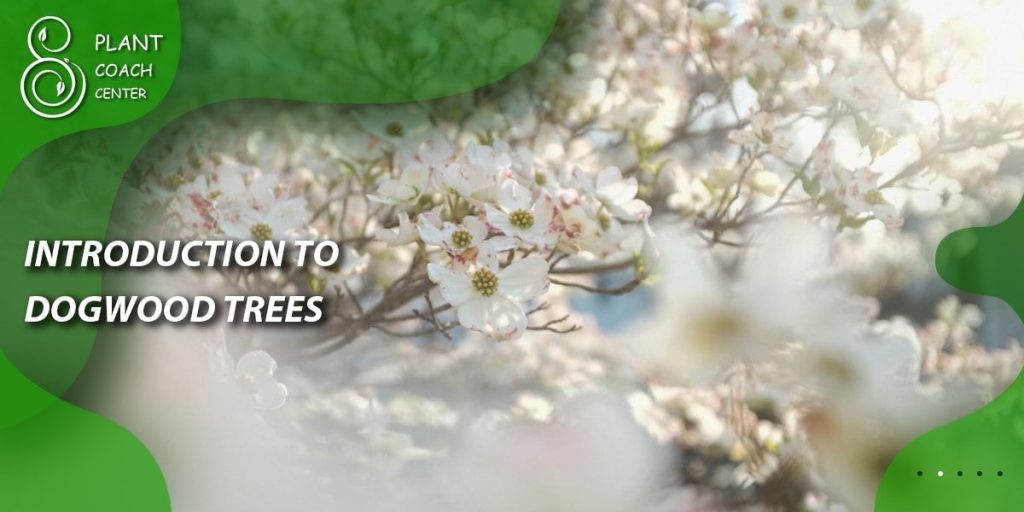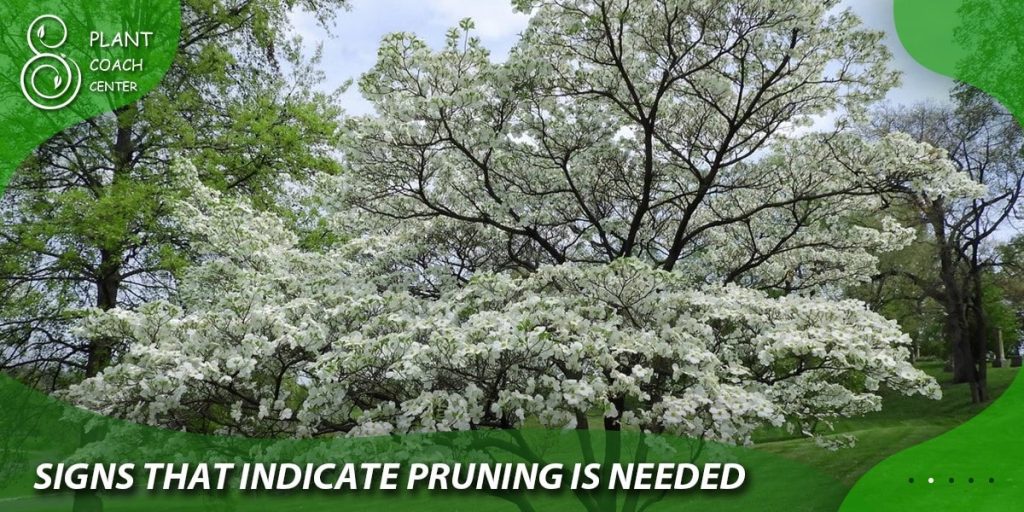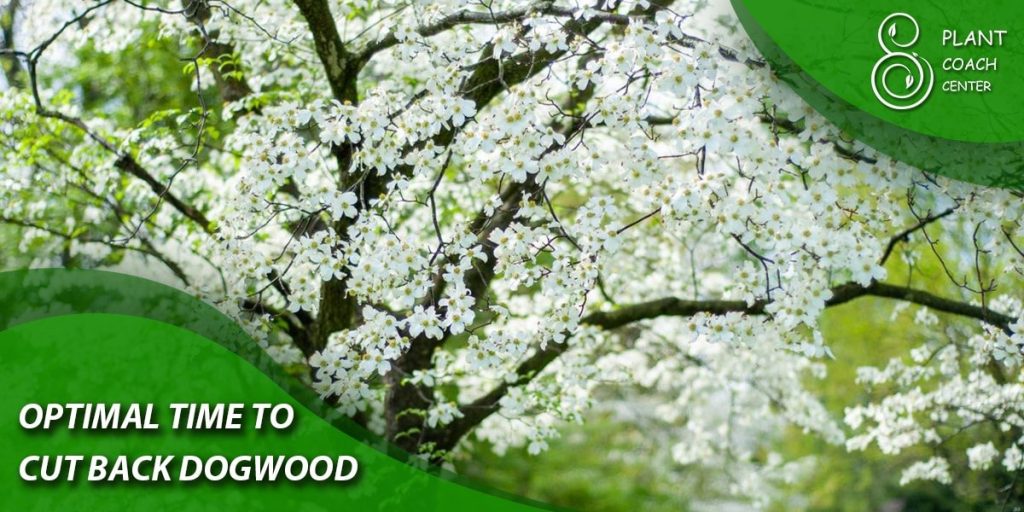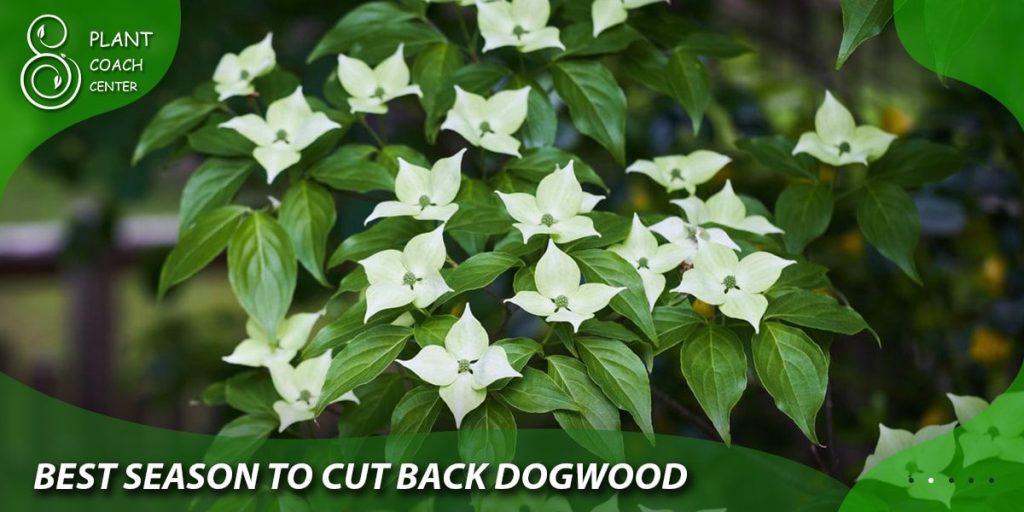When to Cut Back Dogwood
Dogwood trees are stunning additions to any landscape, boasting beautiful flowers and vibrant foliage. Proper pruning is essential for maintaining their health and appearance. In this comprehensive guide, we will delve into the art of dogwood pruning, discussing the best timing, techniques, and the benefits of this vital horticultural practice. Join us as we explore the world of plant coaching and address common problems related to dogwood trees.
Introduction to Dogwood Trees
Dogwoods are deciduous trees belonging to the Cornaceae family, and they are cherished for their ornamental qualities and ability to thrive in various environments. With an array of species, including Cornus florida (flowering dogwood), Cornus kousa (Kousa dogwood), and Cornus sericea (red osier dogwood), these trees enchant gardeners and nature enthusiasts alike.

Overview of Dogwood Species
- Flowering Dogwood (Cornus florida)
- Iconic native species in North America
- Showcases large, four-petaled flowers in various colors
- Striking red berries in the fall, attracting wildlife
- Kousa Dogwood (Cornus kousa)
- Native to East Asia, including China, Korea, and Japan
- Unique pointed flowers and raspberry-like fruits
- Excellent disease resistance
- Red Osier Dogwood (Cornus sericea)
- Well-known for its vibrant red stems in winter
- Tolerates wet conditions, suitable for water features
- Small white flowers and clusters of white berries
Importance of Pruning in Dogwood Care
Pruning is a fundamental practice in dogwood tree care, offering numerous benefits:
- Encourages Healthy Growth: Regular pruning stimulates new growth and maintains the tree’s structural integrity.
- Enhances Flowering: Properly pruned dogwood trees produce more flowers, adding to their visual appeal.
- Controls Size: Pruning helps manage the tree’s size, preventing overcrowding in the landscape.
- Removes Diseased or Damaged Wood: Cutting back affected branches improves tree health and prevents the spread of diseases.
Understanding the Pruning Process
Before we delve into the specifics of dogwood pruning, let’s explore the general concept of pruning and its significance.
What is Pruning?
Pruning is the strategic removal of branches and foliage to shape, maintain, and improve the overall health of a tree or plant.
Benefits of Pruning Dogwood Trees
- Health and Longevity: Regular pruning removes dead or diseased branches, promoting a healthier, longer-lasting tree.
- Aesthetics: Properly pruned dogwood trees exhibit an attractive, well-groomed appearance, enhancing the landscape’s beauty.
- Improved Air Circulation: Pruning fosters better air circulation within the canopy, reducing the risk of fungal infections.
Factors to Consider Before Pruning
Before grabbing your pruning shears, take these factors into account:
- Time of Year: Timing is crucial; different dogwood species have distinct pruning requirements.
- Tree Age and Health: The age and health of the tree influence the extent and approach to pruning.
- Weather Conditions: Avoid pruning during extreme weather, such as freezing temperatures or heatwaves.
The Best Time to Prune Dogwood Trees
Timing is critical when it comes to pruning dogwood trees, as it directly impacts the tree’s health and future growth. Let’s explore the optimal timing for different types of pruning.
Seasonal Considerations for Pruning
Dogwood trees respond differently to pruning depending on the time of year:
- Dormant Season Pruning (Late Winter to Early Spring):
- Best for major structural pruning and removal of deadwood.
- Pruning during dormancy minimizes stress on the tree and promotes vigorous spring growth.
- Active Growth Season Pruning (Late Spring to Early Summer):
- Suitable for light pruning, shaping, and deadheading.
- Pruning during the active growth phase encourages faster healing and minimizes sap loss.
The Influence of Climate on Pruning Timing
Temperate Climates: In temperate climates, where dogwoods are native, follow the general seasonal considerations for pruning. In regions with cold winters, opt for dormant season pruning to protect the tree from harsh weather.
Tropical and Subtropical Climates: In areas with milder winters or no dormancy period, prune dogwood trees during the cooler months to avoid stressing the tree during hot weather.

Signs That Indicate Pruning is Needed
Observing your dogwood tree’s condition can guide you in determining when and what to prune.
Recognizing Overgrown Dogwood Trees
- Excessive Height: If the tree becomes too tall for your landscape, consider reducing its height during the dormant season.
- Crowded Canopy: An overcrowded canopy can lead to poor air circulation, encouraging disease development.
Identifying Damaged or Diseased Branches
- Deadwood: Dead branches are not only unsightly but can also become a source of infection for the tree.
- Fungal Infections: Observe for signs of fungal diseases like powdery mildew or anthracnose, which may warrant pruning.
Understanding the Impact of Deadwood on Tree Health
- Risk of Falling Branches: Deadwood poses a safety hazard, especially during storms or high winds.
- Resource Allocation: Dead branches divert resources from healthy parts of the tree, affecting growth and vitality.
Essential Tools and Techniques for Pruning Dogwood Trees
Proper tools and techniques are crucial for successful and healthy pruning. Let’s explore the essential tools you’ll need and the correct techniques to apply.
Pruning Tools and Their Functions
Having the right tools ensures clean cuts and minimizes damage to the tree:
- Hand Pruners (Secateurs): Ideal for small branches and precise cuts.
- Loppers: Use for thicker branches that hand pruners cannot handle.
- Pruning Saw: For larger branches that loppers cannot cut through.
- Pole Pruner: Useful for reaching higher branches without the need for a ladder.
- Pruning Sealant: Optional, but can be applied to large wounds to aid healing.
Understanding Different Pruning Techniques
Different pruning techniques serve various purposes and should be applied appropriately:
- Thinning: Removing entire branches back to the main stem or parent branch. It improves air circulation and light penetration, reducing disease risk.
- Heading: Shortening branches to encourage bushier growth or restrict height. Used for shaping and rejuvenation.
- Deadheading: Removing spent flowers to promote new growth and enhance appearance.
- Rejuvenation Pruning: Drastic pruning to revive an overgrown or neglected tree.
Step-by-step Guide to Pruning Dogwood Trees
Pruning dogwood trees can be intimidating, but by following these steps, you can confidently prune your tree:
- Assess the Tree: Identify the tree’s needs by inspecting its overall health, damaged or diseased branches, and shape.
- Gather the Right Tools: Ensure you have the necessary pruning tools for the task at hand.
- Choose the Right Time: Select the appropriate season for pruning based on your specific goals.
- Start with Deadwood: Remove any dead, diseased, or damaged branches first. Make clean cuts just outside the branch collar (the swollen area where the branch meets the trunk).
- Thin the Canopy: If needed, perform selective thinning to reduce crowding and improve air circulation. Aim to remove branches that cross or rub against each other.
- Shape the Tree: Use heading cuts to achieve the desired shape and size. Be conservative, as dogwoods are sensitive to heavy pruning.
- Step Back and Evaluate: After each cut, step back and observe the tree’s shape to avoid over-pruning.
- Avoid Over-pruning: Be cautious not to remove more than 25% of the canopy in a single season, as it may stress the tree.
- Clean Up and Dispose: Gather the pruned branches and dispose of them appropriately.
Pruning Young Dogwood Trees for Optimal Growth
Properly pruning young dogwood trees sets the foundation for their long-term health and beauty.

Establishing a Solid Foundation
- Formative Pruning: Train the tree’s structure by removing competing or poorly placed branches to establish a central leader.
- Removing Suckers: Eliminate suckers that emerge from the tree’s base, diverting energy from the main tree.
- Mulching: Apply a layer of organic mulch around the base of the tree to conserve moisture and suppress weeds.
Training Young Trees for Healthy Structure
- Selecting Scaffold Branches: Choose strong, well-spaced branches to form the tree’s framework.
- Pruning for Balanced Growth: Promote even distribution of branches to prevent one-sided growth.
- Supporting Weak Branches: Use tree ties or stakes to support weak or vulnerable branches.
Pruning for Enhanced Flower Production
- Encouraging Flower Buds: Promote the development of flower buds by selectively pruning in the dormant season.
- Avoiding Flower Bud Removal: Be cautious not to remove branches with potential flower buds during pruning.
Rejuvenation Pruning for Mature Dogwood Trees
Rejuvenation pruning can revitalize mature dogwood trees that have become overgrown or neglected over the years. Follow these steps to breathe new life into your tree:
- Assess the Tree’s Health: Before initiating rejuvenation pruning, evaluate the tree’s overall health and structural integrity.
- Determine the Pruning Level: Decide the extent of pruning required. In severe cases, remove up to one-third of the tree’s canopy over several seasons.
- Prune Over Several Seasons: To avoid overwhelming the tree, spread rejuvenation pruning over multiple years, typically three to five.
- Remove Deadwood and Diseased Branches: Start by cutting out any dead, diseased, or damaged branches.
- Thinning Out Overcrowded Branches: Gradually thin out crowded branches to improve air circulation and light penetration.
- Use Heading Cuts Judiciously: Employ heading cuts to reduce the height and encourage new growth. Avoid excessive heading, as it can cause stress.
- Patience is Key: Be patient and allow the tree time to recover between pruning sessions.
Dealing with Dogwood Tree Diseases and Disorders
Dogwood trees can fall prey to various diseases and disorders. Pruning can play a significant role in disease management:
Common Diseases Affecting Dogwoods
- Powdery Mildew (Erysiphe pulchra): Characterized by a white, powdery coating on leaves, leading to reduced vigor and flower production.
- Anthracnose (Discula spp.): Causes leaf spots, stem cankers, and dieback, potentially leading to tree decline.
- Dogwood Borer (Synanthedon scitula): Larvae bore into the trunk, weakening the tree and creating entry points for other pests and diseases.
How Pruning Can Help Manage Diseases
- Thinning for Improved Air Circulation: Proper thinning increases airflow through the canopy, reducing humidity and mitigating powdery mildew.
- Removal of Infected Branches: Pruning out diseased branches can help stop the spread of infections.
- Deadwood Removal: Removing deadwood eliminates potential breeding grounds for borers and other pests.
Preventative Measures to Avoid Diseases
- Choose Resistant Varieties: Opt for disease-resistant dogwood species and cultivars.
- Proper Watering and Drainage: Avoid overwatering and ensure proper drainage to prevent root rot and fungal diseases.
- Sterilize Pruning Tools: Disinfect pruning tools between cuts, especially when dealing with diseased branches.
Pruning Dogwood Trees for Aesthetics and Landscape Design
Dogwood trees are not only admired for their natural beauty but can also be skillfully pruned to enhance their aesthetics and complement the landscape.

Incorporating Dogwoods into the Landscape
- Choosing the Right Location: Select a suitable spot for your dogwood tree, considering sunlight, soil conditions, and available space.
- Complementary Plantings: Pair dogwood trees with plants that complement their foliage and flower colors, enhancing the overall landscape design.
- Seasonal Interest: Consider incorporating other plants that provide interest throughout the seasons, ensuring your landscape looks appealing year-round.
Pruning for Different Aesthetic Effects
- Canopy Shaping: Prune dogwood trees to achieve a symmetrical or naturalistic canopy shape, depending on your landscape design preferences.
- Flower Showcase: Strategically prune to maximize flower display during the blooming season, creating stunning focal points.
- Fall Foliage: Encourage vibrant fall foliage by maintaining the tree’s health and choosing appropriate pruning techniques.
Potential Risks and Mistakes in Dogwood Pruning
While pruning offers numerous benefits, there are potential risks and common mistakes that gardeners should be aware of.
Risks of Improper Pruning
- Stress and Decline: Excessive pruning can stress the tree, leading to reduced growth and overall decline in health.
- Infection Entry Points: Improper cuts can create entry points for diseases and pests.
- Loss of Aesthetic Appeal: Over-pruning can result in an unbalanced or unnatural appearance.
Common Mistakes to Avoid
- Topping: Drastic topping cuts should be avoided, as they lead to weak, poorly structured growth.
- Over-Thinning: Excessive thinning can remove too many branches, negatively affecting the tree’s health.
- Pruning at the Wrong Time: Pruning at the wrong time of year can disrupt the tree’s growth and flowering cycles.
Expert Tips and Insights from Plant Coaches
Plant coaches and arborists offer valuable insights and tips for successful dogwood pruning:
- Work with the Tree’s Natural Form: Maintain the tree’s natural shape and refrain from excessive reshaping.
- Use Sharp and Clean Tools: Sharp, clean cuts promote quick healing and reduce the risk of infection.
- Monitor Growth Regularly: Keep an eye on the tree’s growth and make small, corrective cuts as needed.
- Seek Professional Help: For major pruning or if uncertain about the best approach, consult a certified arborist or plant coach.

Last words
Dogwood pruning is a rewarding horticultural practice that enhances the health, beauty, and longevity of these captivating trees. Understanding the best times to prune, using appropriate tools and techniques, and avoiding common mistakes are essential aspects of successful pruning. Whether you’re aiming to improve aesthetics or manage tree health, the art of dogwood pruning offers a fulfilling journey for both seasoned gardeners and enthusiastic plant lovers.
Remember, each pruning session is an opportunity to connect with your dogwood tree, observe its growth, and support its journey through the seasons. By employing the knowledge and tips from this comprehensive guide, you can confidently embark on the art of dogwood pruning and ensure the well-being of these magnificent trees for years to come. Happy pruning and nurturing your beautiful dogwood trees!
When is the best time to prune dogwood trees?
During the dormant season for major pruning, and the active growth season for light shaping.
Can dogwood trees handle severe pruning?
Dogwoods can tolerate some pruning, but avoid drastic cuts or removing more than 25% of the canopy at once.
How do I prevent disease when pruning dogwood trees?
Disinfect pruning tools, remove deadwood, and avoid pruning during wet conditions. Choose disease-resistant dogwood varieties.







